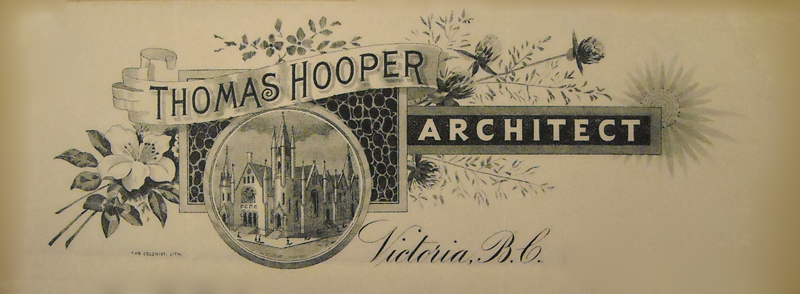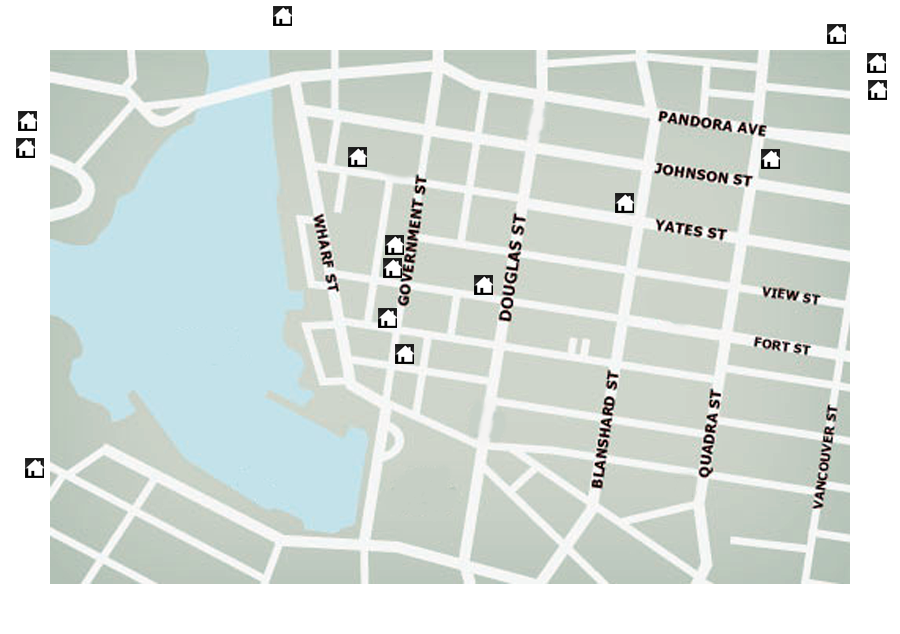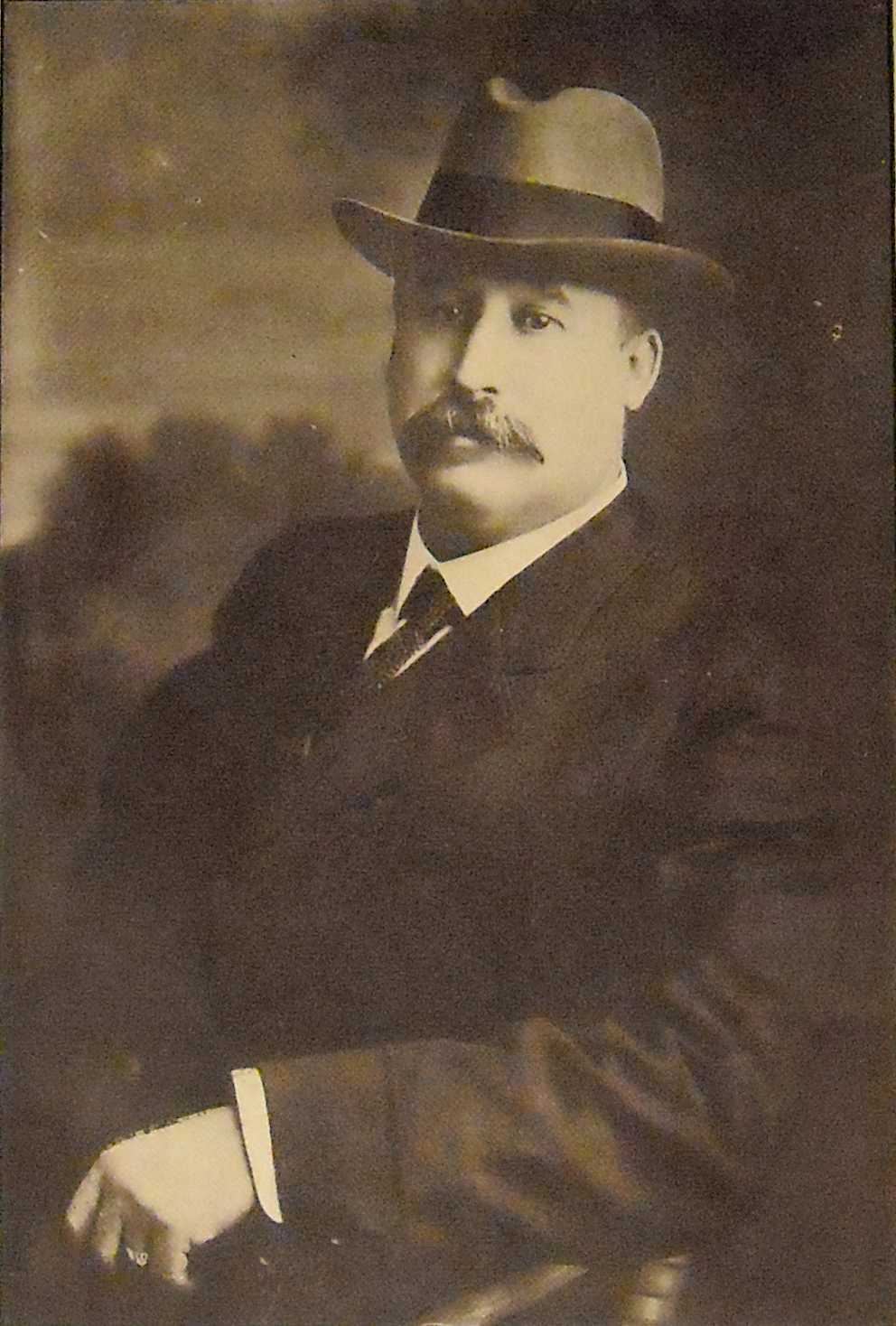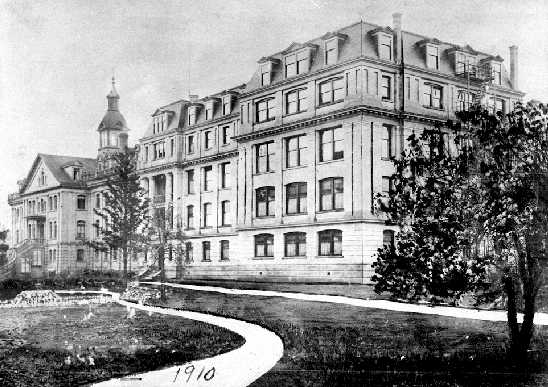Thomas Hooper was born in Hatherleigh, Devon on 2 March 1857. Hooper had two uncles, who were architects in England, and he moved to London, Ontario with his family in 1871 as a teenager. Hooper was apprenticing as a joiner and carpenter in London, but he moved to Emerson, Manitoba with his family in 1878. Hooper married Rebecca Johnson the following year. 1
Emerson was a Western boomtown, and Hooper continued to chase the opportunities of growth communities in the West, which the Times would later describe as "tramping the CPRThe Canadian Pacific Railway was completed at Craigellachie, BC, 7 November 1885.."2 Hooper moved to Winnipeg to work as a contractor and architect, when that city got the boost of the incoming railroadThe Canadian Pacific Railway was completed at Craigellachie, BC, 7 November 1885., but he moved West again in 1886 to Vancouver, the rapidly growing terminus of the CPRThe Canadian Pacific Railway was completed at Craigellachie, BC, 7 November 1885.. Hooper had quick success on the West Coast, and he served as Provincial Supervisory Architect and established an architectural practice in 1887. 3 Hooper's business grew in Vancouver, but he switched his focus in the 1890s to Victoria, where he recognized a more lucrative market.4
Hooper was one of several English-born architects, who arrived in Victoria just after the railroad, like Francis Rattenbury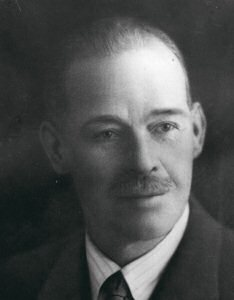
Francis Rattenbury.5 Hooper initially came to Victoria to work of the Metropolitan Methodist church (1889-91), but thereafter he operated firms in both Victoria and Vancouver.6 Thomas Hooper was a fortune seeker, like John Teague, but he was also a thoroughly professional architect in a newly professional industry, and he never advertised in Victoria as anything other than an architect. 7 Like Teague, Hooper amassed a fortune designing and constructing Victoria's commercial sector; however, he also asserted strong stylistic beliefs in his public buildings. Hooper stayed up to date on the latest innovations and trends in the East, and he was ultimately responsible for introducing several of them to British Columbia. 8
The Sisters of St. Ann commissioned Hooper to design an expansion to the academy in 1908, which would result in the final major addition to the building. Unlike John Teague before him, Hooper showed no reverence to the original design of Fr. Michaud. Hooper designed a huge domed structure, which would cover the existing building, but the Sisters rejected it. 9 Instead Hooper adapted his design and constructed a sizable and inconsistent appendage to the West of the Michaud wing in 1910. Hooper was an architect with a mind of his own, and he ran into significant opposition again when he totally ignored the directions of the building committee in his submission for the University of British Columbia. 10 However, Hooper's addition to St. Ann's did maintain the spirit of the building as French-Canadian, since it exhibited an obvious Second Empire influence.
The years before the First World War saw another economic boom, and these were the most prolific years of Hooper's career. 11 He worked all over BC in Victoria, Vancouver, Revelstoke, Vernon, and Chilliwack focusing on large, public commissions. However, the local economy and Hooper's business took a sharp decline in 1913. 12 Hooper moved his practice to New York in 1915, but he lost his market again when the United States entered the war.
Hooper returned to Vancouver in 1927 to eloquent editorials in the local press, but he failed to reestablish his career. 13 Thomas Hooper died on 1 January 1935:
Former Victoria Architect Dies
Thomas Hooper, Designer of Metropolitan Church Here, Passes in Vancouver.
Thomas Hooper, aged seventy-seven years, pioneer resident of Victoria and Vancouver, and widely known in British Columbia as an architect, died in Vancouver on New Years Day.
As designer of the Metropolitan United Church and the old Ice Arena here, Mr. Hooper was particularly well known in this city.
C. Elwood Watkins, local architect, was articled to Mr. Hooper in 1890 and some twenty years later Mr. Watkins entered into partnership with Mr. Hooper. They were associates when Mr. Hooper was given the contract to design the Metropolitan United Church. The two enjoyed a term as partners, Mr. Hooper leaving during the war for the United States.
RETURNS TO CANADA
He subsequently returned to canda. Structures erected here by Mr. Hooper include the Centennial United Church, George Jay School, the Humbolt Street extension to St. Joseph's Hospital and the addition to St. Ann's Academy.
While in practice here, Mr. Hooper maintained an office in Vancouver and designed in the Terminal City the Spencer Building on Cordova Street, the Winch building adjoining the Vancouver Postoffice and the addition to the Vancouver Court-house.
Funeral Services were conducted in Vancouver. (8 Jan 1935)
14
Just years earlier, the newspapers had commented on Hooper as "architect of many of Victoria's chief business buildings," but here they referred exclusively to his large, public works. 15 This was indicative of the identity adopted by professional architects, who associated themselves and their talent with the magnitudes of their work. When Thomas Hooper died he was not a builder like Charles Verheyden had been.
